In the Prison Notebooks Gramsci says: “The starting-point of critical elaboration is the consciousness of what one really is, and is ‘knowing thyself’ as a product of the historical process to date, which has deposited in you an infinity of traces, without leaving an inventory.” The only available English translation inexplicably leaves Gramsci’s comment at that, whereas in fact Gramsci’s Italian text concludes by adding, “ therefore it is imperative at the outset to compile such an inventory.”[i]
Edward Said
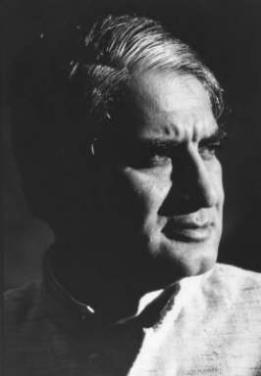
Architect Charles Correa’s monograph has a Map of the World centred on Bombay[ii] in which he lives in one of his own designs (Sonmarg Apartments). His living room opens out into the cityscape of Mumbai (erstwhile Bombay); it opens inwardly into an image on the wall – a courtyard of the Gandhi Memorial Museum. At the centre of the world is a courtyard, open to the sky.
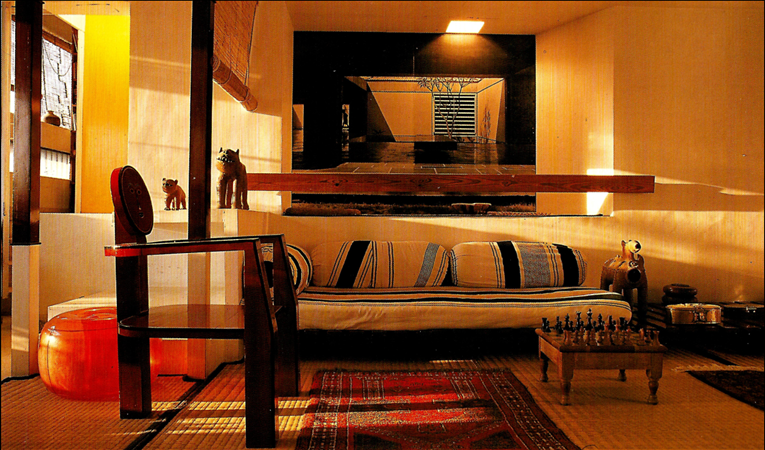
The photograph is as minimal and resonant as the last possessions of the nation’s founding father. Gandhi’s metaphorical house had found a home: “I do not want my house to be walled on all sides and my windows to be stuffed. I want the cultures of all the lands to be blown about my house as freely as possible. But I refuse to be blown off my feet by any of them.”[iii] Gandhi’s words also describe the architect’s uncanny knack for assimilating various influences: the museum can be traced to western sources (Van Eyk, Louis Kahn and the Structuralists), as well as eastern (chattri, “Moghul Architecture at its most abstract’[iv]). In the final analysis, it achieves what its architect attributed to Gandhi and Mao, “The genius of both these men was that they could stitch these ideas into an old social fabric and produce a seamless wonder.” [v]
The Gandhi museum serves as a benchmark in the architect’s oeuvre. It is also the benchmark of a nation’s architecture after Independence and, according to Kenneth Frampton (1996), “remains one of the most compelling national monuments erected anywhere in this century.” [vi] Correa designed it when he was only 28 years old.
In a profession renowned for its late-bloomers where life begins after fifty, Correa was a child prodigy.

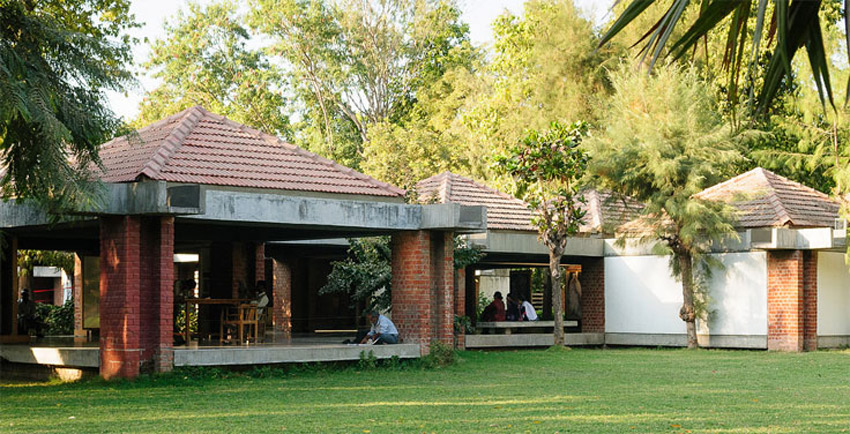
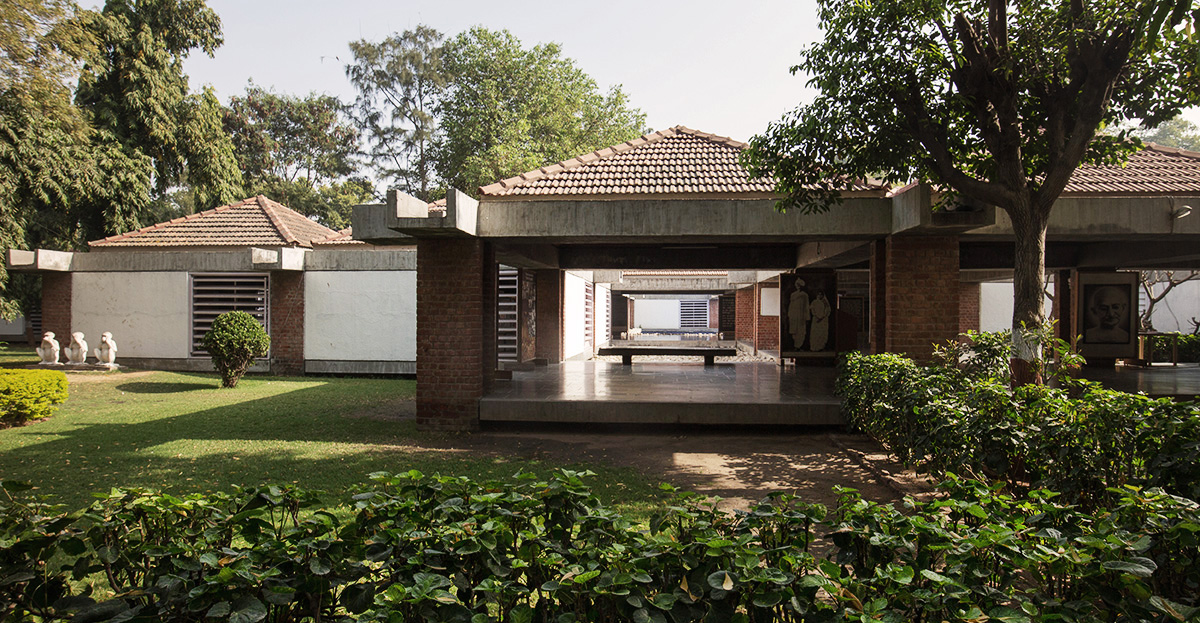
He was 31 when he designed Sonmarg Apartments, 34 when he proposed New Bombay (and seven years later was its Director), 39 when he was invited along with Alexander, Kurokawa, Stirling and others to design experimental housing in Peru, and 44 when TIME featured him as among the 150 new leaders worldwide. For those willing to respond to challenges, a new nation offers enormous opportunities (India in 1947 had only 300[vii] architects while today it has over 20,000[viii] sans State patronage). At 54, an age by which most architects arrive at their first significant building, Correa received the RIBA Royal Gold Medal on its 150th Anniversary, for his contribution to architecture (during which, ironically, the other princely Charles denounced modern architecture as a “monstrous carbuncle”). With a spate of awards since: The Aga Khan Award in 1998, Padma Vibhushanin 2006 (only the Pritzker eludes to complete the Grand Slam); with projects from Mauritius to Malaysia, UK to the USA and a forthcoming Ismaili Centre in Canada, along with visiting professorship in China, UK, Singapore and USA, he has done more than any other architect to put India on the world map.
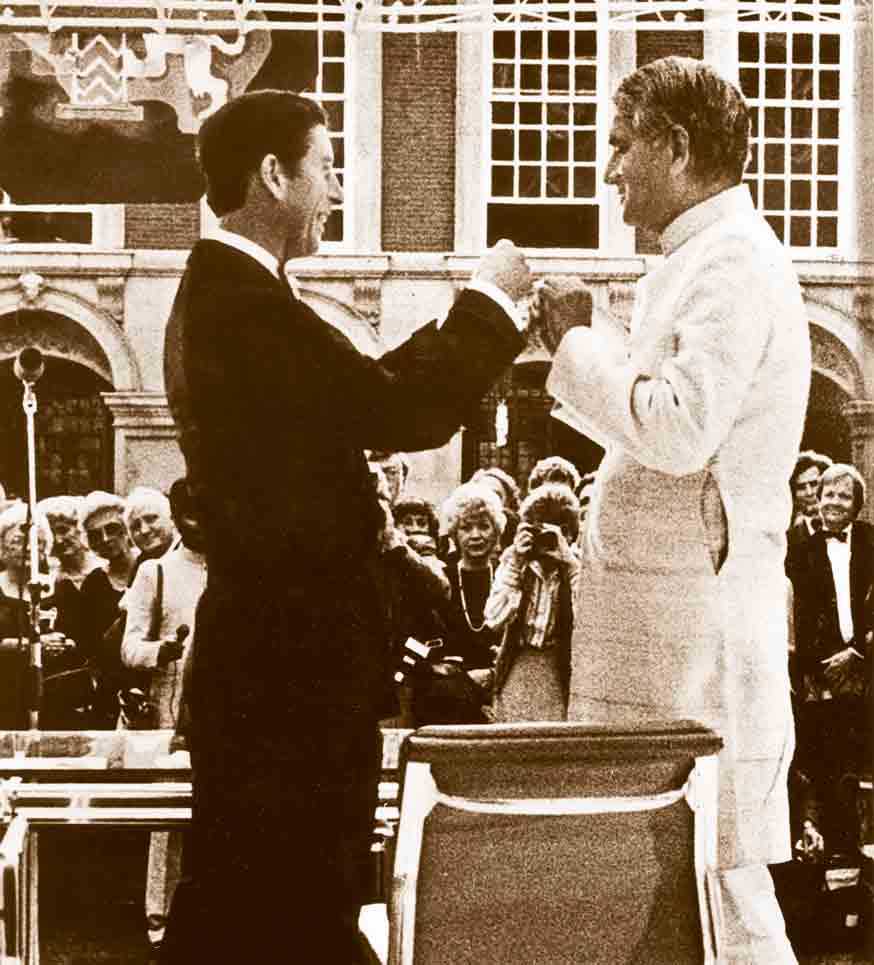
The Gandhi museum was inaugurated by Jawaharlal Nehru. The choice was appropriate because the building’s ambiguous form had succeeded in reconciling the Mahatma’s suspicion of modern technology with the Pundit’s wholehearted embrace of it. The architect-of-the-nation (nation-building finds in architecture an indispensable metaphor) played a decisive role in the debate on the style that was raging. Nationalism, being genetically parochial, reduced history to a shopping mall of architectural styles. Buildings like the Supreme Court in New Delhi built by the CPWD persisted with the Imperial Style fulfilling Fanon’s prediction that the natives that inherit the nation would be colonials with a politically correct skin pigmentation. ‘Anglo Indian Red Fort style Vignola; Flawless but deadly’ was Le Corbusier’s classification of it. In a strategic move to lend his support to the progressive camp, Nehru had invited Corbusier to design Chandigarh.
Two Capitols
In History and Truth, Paul Ricoeur states: “There is the paradox: how to become modern and to return to sources; how to revive an old, dormant civilization and take part in universal civilization.” [ix] Two new capitol complexes were being built: Chandigarh and Bhubaneshwar. Both did not attempt to resolve the post-colonial paradox. The Swiss Corbusier’s Chandigarh became modern and made no attempt “to return to sources” ( save for the horn profile of some native cattle inspiring the parasol roofs: pity he ignored the Indian street in which that celebrated cattle roamed). The German (released from an Indian jail, but perhaps insufficiently liberated) Koenigsburger’s Bhubaneshwar revived an old, dormant civilization but made no attempt to “take part in universal civilization.” Chandigarh went on to become the Public Sector’s official style, while Bhubaneshwar reincarnated in the late 80s as the Private Sector’s developer-postmodernism (fairy-tales as commodities).
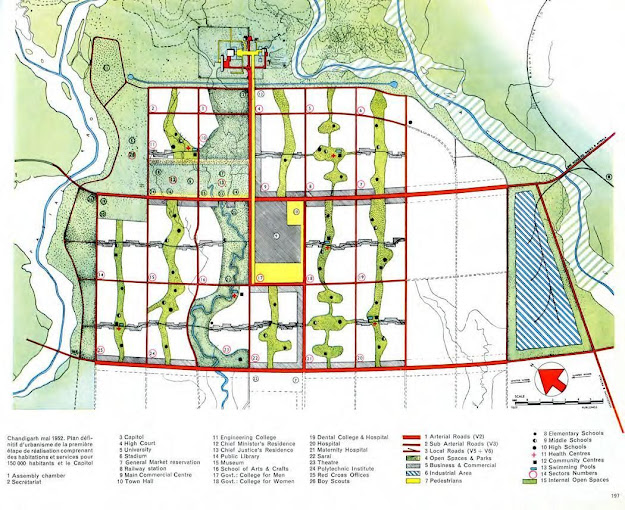
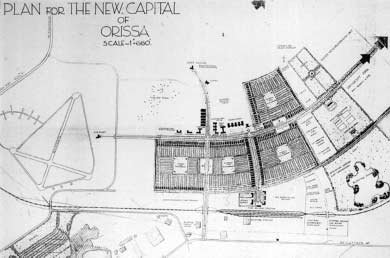
Chandigarh’s best spokesman seems to have been Nehru himself. His 1959 defence spelt out the national agenda in architecture: “I have welcomed very greatly one great experiment in India which you all know very well – Chandigarh. Many people argue about it, some dislike it, and some like it. It is totally immaterial whether you like it or not…You may squirm at the impact, but it makes you think and imbibe new ideas. And the one thing that India requires in so many fields is to be hit on the head, so that you may think.”[x] The fact of India being hit is in retrospect indisputable; whether it was conducive to thinking is another matter.
The French philosopher Henri Lefebvre was more accurate. “Le Corbusier,” he said, “was a good architect but a catastrophic urbanist.”[xi] (Nehru was a catastrophic ecologist with his ecocidal “Dams and laboratories are the temples of modern India” dictum.) Christopher Alexander’s seminal paper A City is not a Tree (published in 1965, the year Corbusier died) took a paragraph to dismantle Chandigarh’s flawed urbanism. Unbeknownst to all, a humble transport official was constructing, sans master plans, an unauthorized alternative utopia. While the formal Chandigarh grew by the day, Nek Chand’s informal Rock Garden grew by night, a fantasy of discarded building materials, consumer debris and other recycled bits of castaway-Chandigarhs (both used cement, as the traditional lime had been phased out in cities by 1950).
Chand’s reincarnation amidst Corbusier’s revolution: vestiges with past lives reappeared intuitively in a homegrown Garden as a counterpoint to the imported rational Grid. Twelve million visited the garden while less than a million resided in the grid. Chand infected Chandi (goddess of power); the Garh (fort) was breached with one-third of the city’s population dwelling in slums.[xii] The city was becoming a Chand-i-Corbu hybrid, hinting at autopoietic systems in other Indian cities of kabaadiwallahs (recyclers), angadias (goods couriers) and dabbawallahs (lunch couriers) with their cutting-edge performance rooted in a value structure from which the profession remains disengaged.
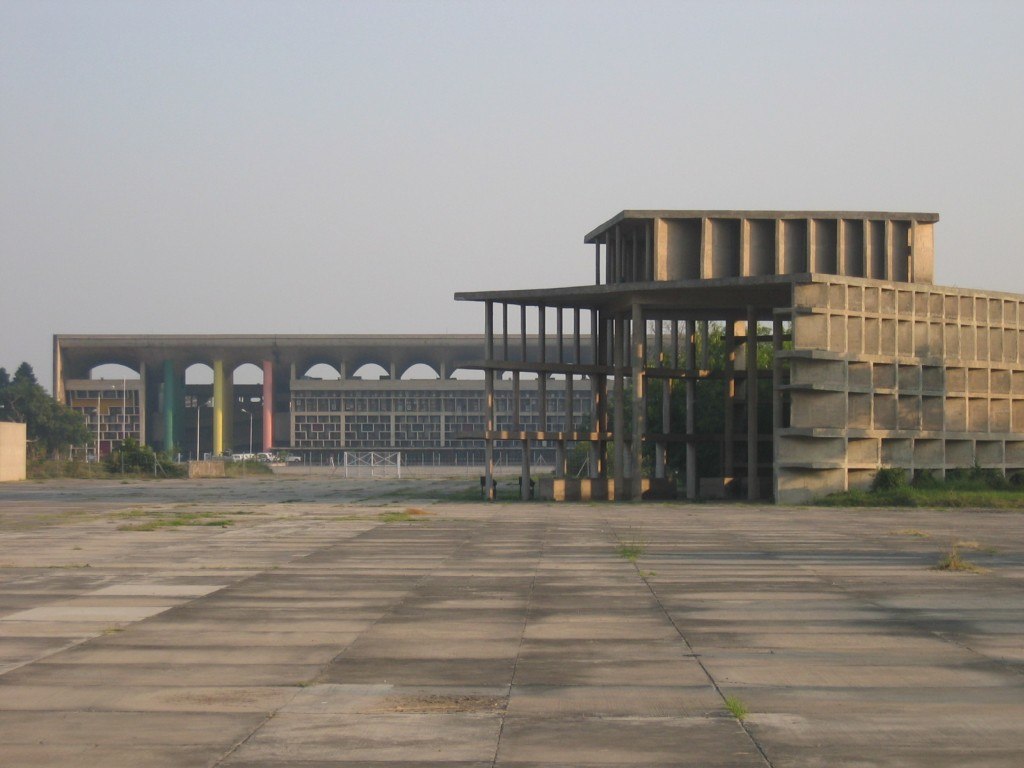
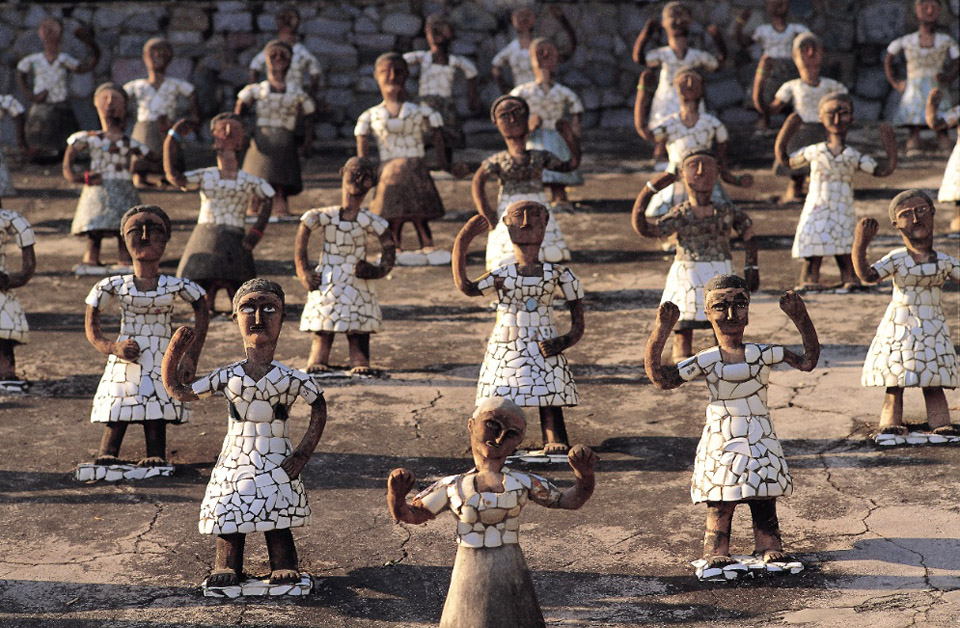
The seat of power, the Capitol Complex is located at the city’s edge with its ‘central’ plaza (vacant lot after 5 pm) cut off from the city by its mini Garh of artificial hills. The dislocated disconnection was not the only eccentricity that Corbusier unleashed on the unsuspecting natives (placing legislators inside a cooling tower, however, was apt). While Chandigarh failed on many counts[xiii] it achieved Corbusier’s purpose for, in the best tradition of orientalism, the French architect was designing in India for an audience abroad. It also achieved Nehru’s dual purpose of attracting international attention while simultaneously influencing attitudes and preparing grounds for the Indian establishment to receive the first generation of architects educated in America: Achyut Kanvinde and the late Habib Rahman and Durga Bajpai. They welcomed Nehru equating modernism with democracy. Pondering on “National Architectural style” Kanvinde in 1959 said: “…the architecture of the past was essentially feudalistic in approach. Contrary to this, the present political institutions are democratic…where the stress is on the economic and social values related to the common man.” [xiv]
So the stage was set for architects to discover new forms in which democracy could dwell while Nehru continued to govern from Lutyen & Baker’s capitol complex that was designed to facilitate and reinforce the imperial British power and remains, even half-a-century later, an anomaly in citizen-friendly governance. Appropriately the name of the imperial road, the venue of grand processions, was not changed but merely translated. Kingsway became Rajpath,[xv] and the annual displays continued but with politically correct parades and floats.
As important as Chandigarh was B.V.Doshi: the apprentice that Corbusier left behind. The buildings in which Doshi lives, works and teaches are all designed by himself (few architects can make that claim). He wisely chose to settle in Ahmedabad, a city of entrepreneurs. With Vikram Sarabhai inspiring its wealthy class to become patrons of enlightened architecture, the city soon became a breeding ground of modern architects, attracting the works of Corbusier and Louis Kahn. And it was in Ahmedabad that jury members Kanvinde and Jane Drew (member of the Chandigarh team) who, in an early competition for the Gujarat Housing Board in 1961, declared Correa’s Tube Housing the winner. By then Correa had already begun to weave into a braid the persisting themes of his architecture, all of which are present in two of his early works, both memorials.

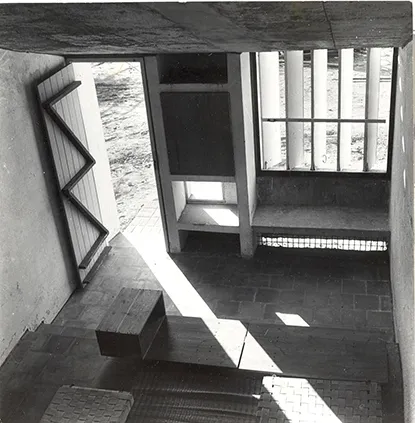
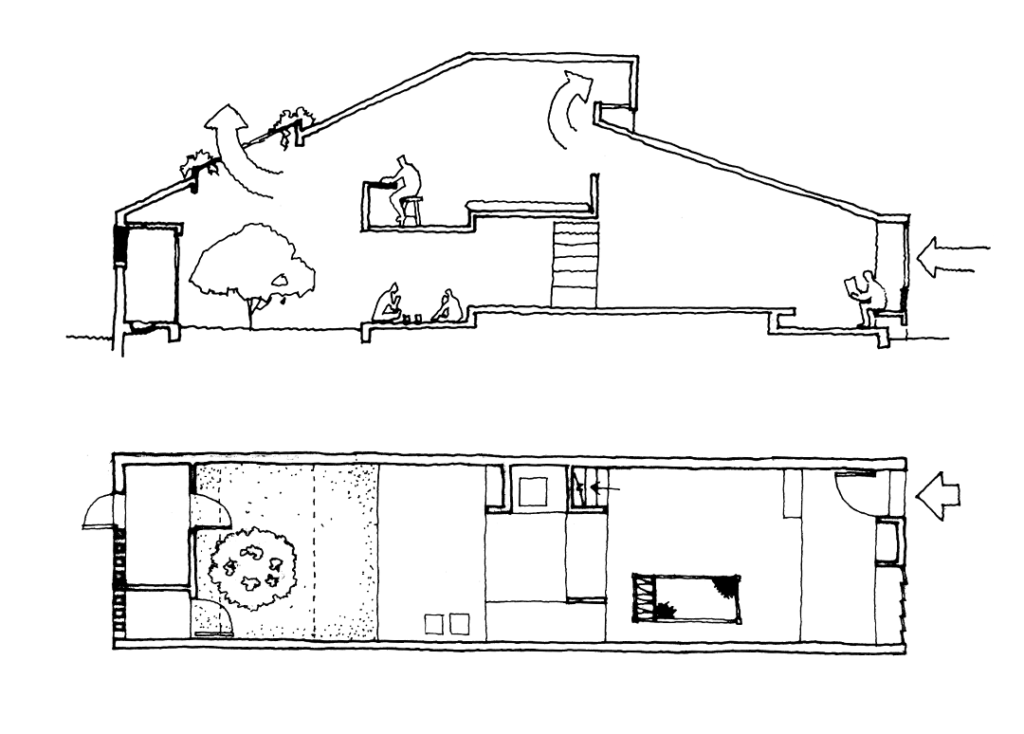
Two Memorials
The Gandhi Memorial Museum (with which this essay commenced) in Ahmedabad by the banks of River Sabarmati and the memorial to Gandhi’s wife Kasturba in Pune at the edge of the Aga Khan Gardens. A year before the first memorial was complete, the second had begun. The two memorials are two very different responses to a similar program, diverse strategies to unravel the most tenuous of architectural briefs: to house memories. Both are architecture at its minimal, where the unbuilt is as important as the built.

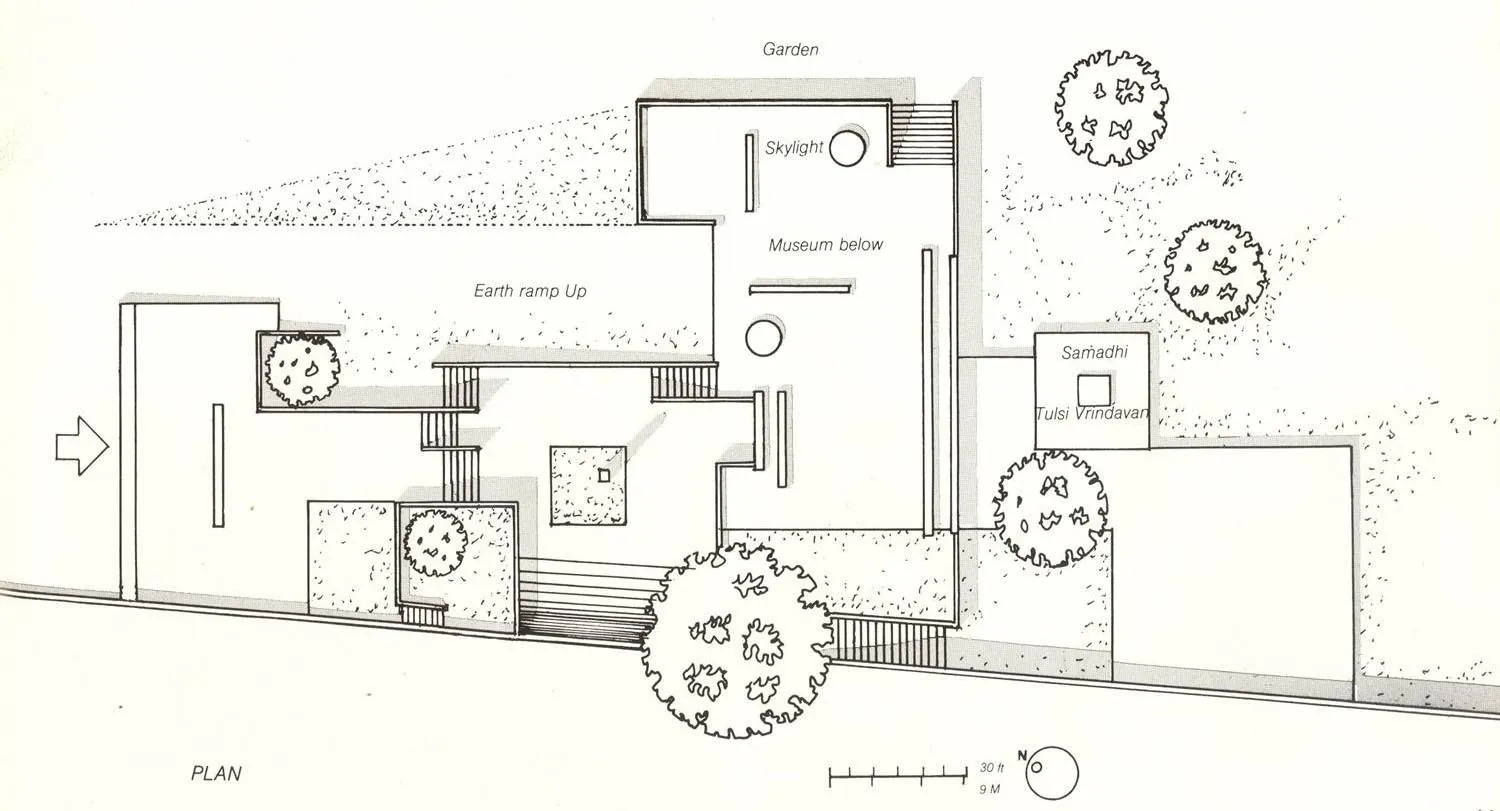
The Gandhi Memorial is an oasis of equi-sized pavilions with tiled pyramidal roofs; grounded chhatris clustering around a pool. The pavilions that house the books, letters and documents (the contents having long been transcended by the container) are enclosed with brick and wooden ventilator panels; the others are left open as verandahs. Interspersed amidst the segregated closed and open pavilions are courtyards that illuminate the whole; a low but definite plinth with a clear groove of shadows that subtly sets off the memorial from the ground. Located by the side of the river (with its single flow), the random cluster of the memorial encourages various pathways of movement within itself.
Located at the edge of a garden (with its multiple routes), is the Kasturba Samadhi with a single path that gently descends on a shifting axis. It is made, not of pavilions, but of platforms; terraces as defined clearings in the garden. It too is planned on a square matrix, but here the grid is subdued. If it is difficult to imagine the earlier memorial with fewer elements, this memorial is difficult to imagine at all. It is the architecture of excavation that recedes into earth and memory, more phenomenological than photogenic; more Ajanta than Acropolis.
The Gandhi memorial receives light from its sides, with equal gradations of alternating light and shade depending on the path you take. The Kasturba memorial leaves you with no choice but to descend into increasing darkness until, at the underground samadhi, a shaft of light from a circular opening above intensifies the contrasting darkness at the periphery of the chamber. The one single image the visitor retains is not of the ‘building’ itself, but of the way, the architecture choreographed both the visitor and the light to descend. In a patriarchal and photogenic-seduced society, it was but natural that Mohandas Gandhi’s memorial was celebrated and Kasturba Gandhi’s ignored.
Together the memorials exhibit the three themes characteristic of Correa’s architecture: the imperative climate; the unfolding pathway; and the ordering square.
1. Imperative climate.
It led to the early competition winner: the Tube House in Ahmedabad. To a program of walk-up apartments, the scheme had responded with row-housing that fulfilled the required density. Each unit had sloping roofs and a top vent to facilitate cross-ventilation. Akin to the concurrent Lever Pavilion, the principle was more successfully used in the subsequent Ramakrishna House (1962), Parekh House (1967) and Previ row housing in Peru (1969).
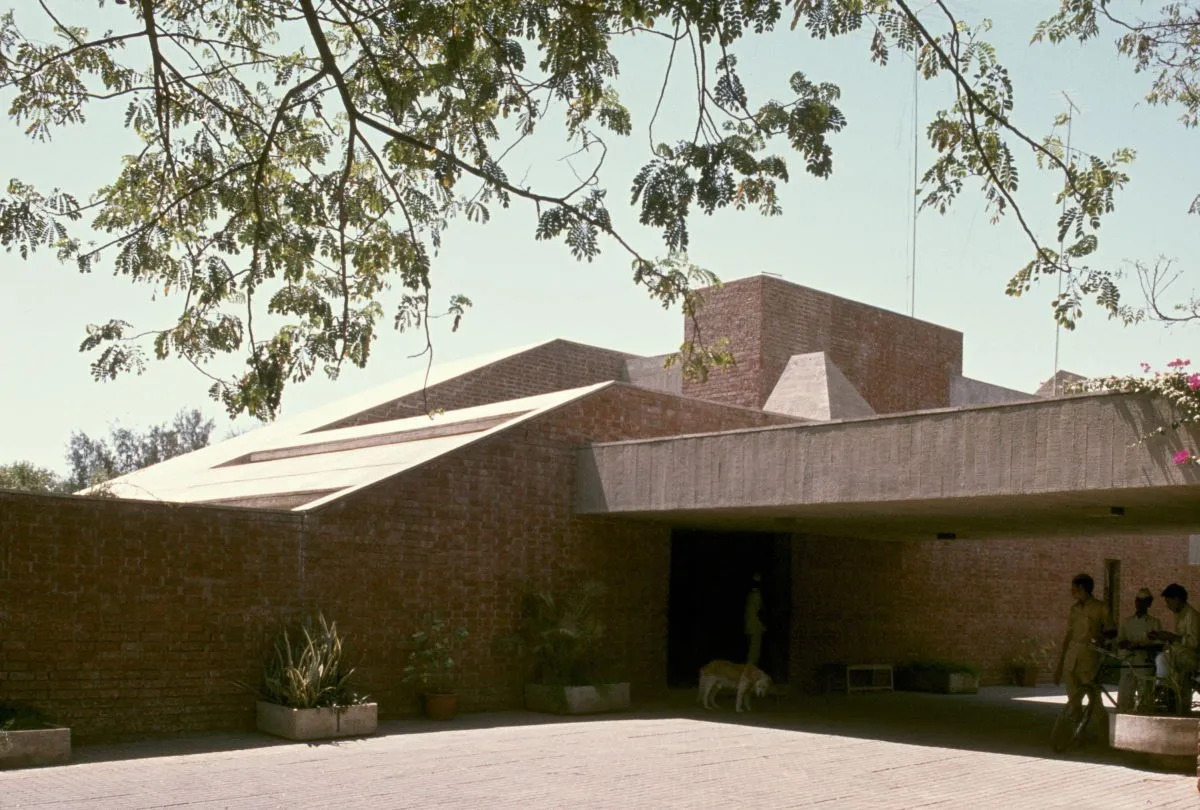
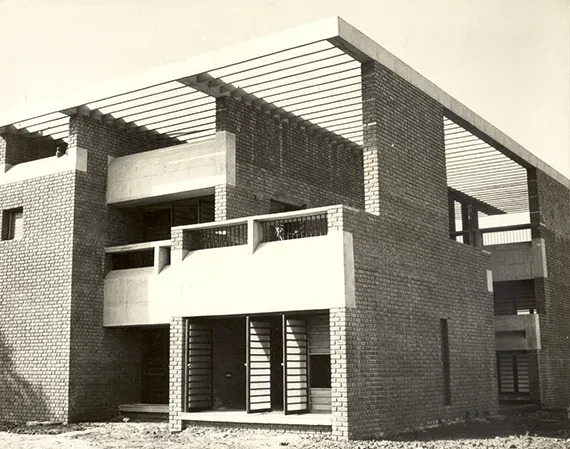
Previ was a meeting of international minds in seeking a way out of the schizophrenic options of either building suburbs that were low-rise and low-density or opting for the downtown high-rise, high-density model. They sought to mediate the two with a model that would be low-rise but high-density, first proposed in the West in 1963 by Sergei Chermayeff and Christopher Alexander. It was in fact a model that was prevalent in the urban history of India (Jaisalmer, Shahjahanabad, Udaipur) and other traditional societies in the world; a link with the past that would occupy much of Correa’s thinking and lead to a spate of projects: Jeevan Bima Nagar Township (1972), Gujarat Housing Board terrace-housing(1972), Calvetty housing (1980, unbuilt), L&T Township (1982), and Incremental Housing realized in Belapur, New Bombay. With Belapur Housing, as in Rewal’s aptly named Asiad Village, the typology begins to reveal its nostalgia for agrarian models.



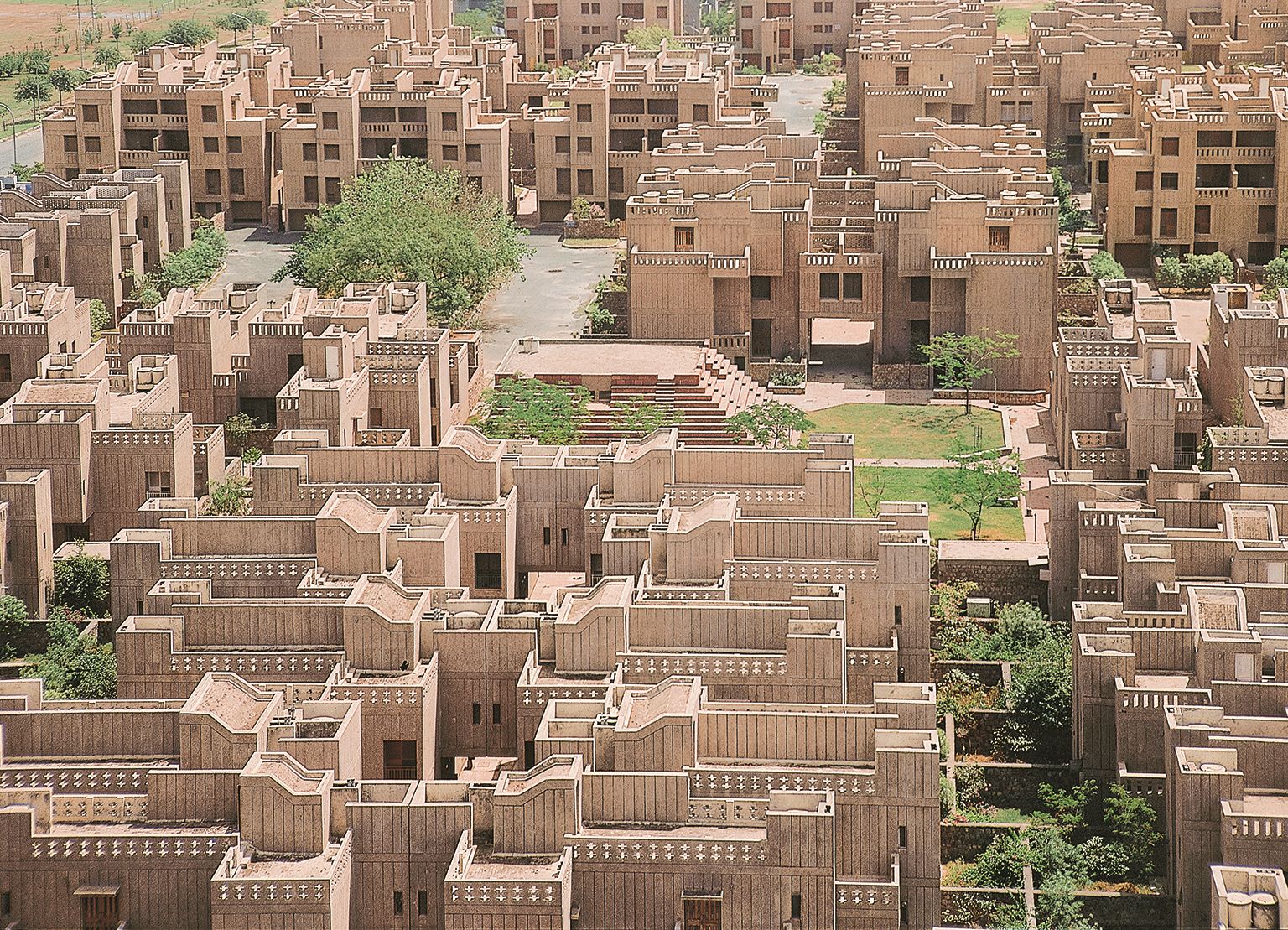
The low-rise high-density was a housing typology that modern India developed extensively and with the greatest flair and with feudal hangovers: even in 2006 apartments have servant rooms with separate entrances. The typology is relevant, particularly in the climate and culture of hot/dry regions as well as those with composite climates and composite modernisms. Little wonder that the Urdu word for neighbour is ‘hamsaya’ or ‘one who shares your shadow’ (is language intrinsically prophetic, nostalgic or state-of-the-art?). Kenneth Frampton has rightly observed: “So far this momentous achievement has been insufficiently appraised not only within but also without the South Asian continent and this stricture surely applies as much to China, Japan and South-East Asia as it does to the critical apparatus of the West.”[xvi] The international recognition of India’s urban housing typology was B. V. Doshi’s Aranya Community Housing in Indore which won The Aga Khan Award for Architecture in 1995.


Even while working on low-rise high-density, Correa was simultaneously refining the tropical answer to high-rise high-density. A year after Previ, the multi-storey Kanchenjunga’s construction had begun and would continue for the next thirteen years. Tower blocks are born of real estate compulsions. As the architect explains, “to a developer looking at an individual urban site, the trade-off between the cost of construction (which rises with building height) and the land component (which varies inversely with the floor space generated) will lead to a certain density”[xvii]. It leads to 28-storeys as emphatic and acontextual as any of Raj Rewal’s Brutalist ventures with their resounding footprints all over New Delhi. The excitement of Rewal’s Permanent Exhibition Complex (the largest labour-intensive RCC space-frame in the world) was apt on Trade Fair grounds, but elsewhere they were exhilarating examples of modernism’s inability to deal with the city, let alone heal it. Kanchenjunga stacks a complex interlock of four types of multilevel tubes in the sky in an east-west orientation with double-storey verandahs as potential gardens-in-the-sky to gulp in the land and sea-breezes of coastal Mumbai. (On another coast: Kovalam, in one of the earliest beach developments in India, the resort is built into the hill with each room getting its own terrace). With that innovative hi-rise, we had come a long way from Habib Rahman’s New Secretariat building (1954) in Calcutta which, with half the number of Kanchenjunga’s storeys had remained India’s tallest modern building for a decade.
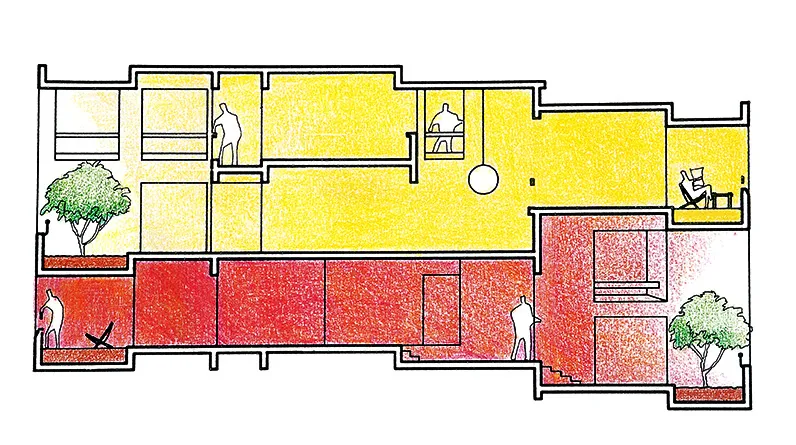
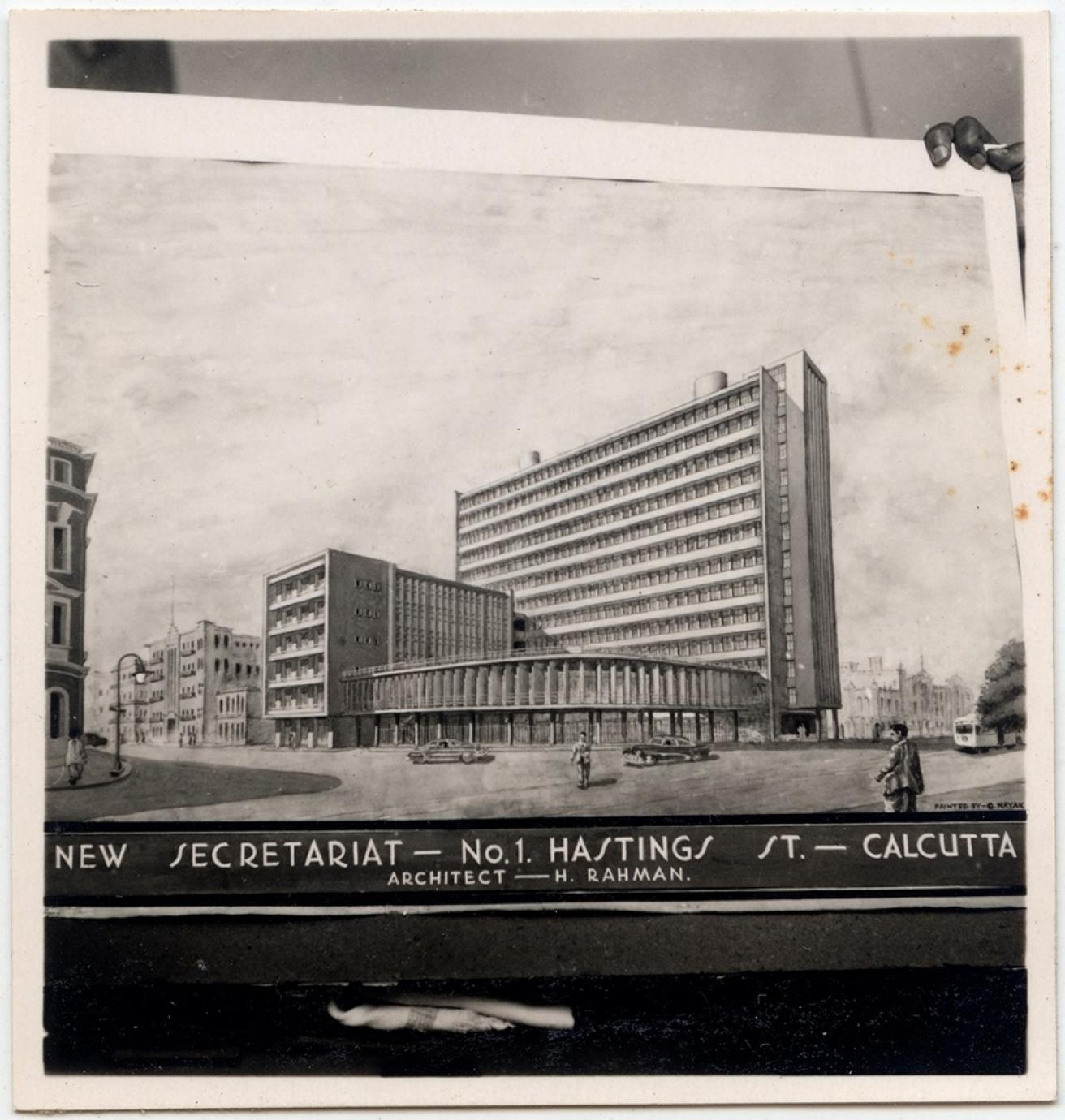

(via: Kanchanjunga Apartments at Cumbala Hill, Architexturez South Asia )
Meanwhile, Correa’s institutional buildings began to use urban-scaled pergola-roofed verandahs as mega-chhatris. It began with the ECIL in Hyderabad in 1968 and continued to oversail onto the MRF HQ and TVS Finance in Madras, Salt Lake City Centre in Kolkatta, in Ulwe, Navi Mumbai and LIC Center in Mauritius, atop the PMI, New York and the Alameda Park, Mexico. In LIC Center, New Delhi the space frame as a pergola was too ephemeral to be read as a roof umbrella and too high to cast any significant shadows. (LIC also failed to interface between the low-rise structures of Connaught Place and the hi-rise structures beyond, by taking sides with the latter). But more effective as the visual statement was the British Council in the same city with its filigree of shadows simulating light filtering through trees while Hodgkin’s black eels swarmed all over the place.

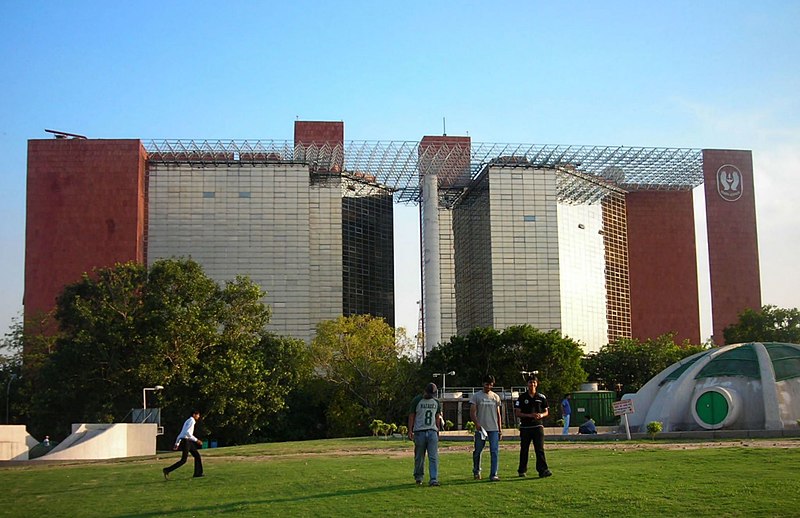
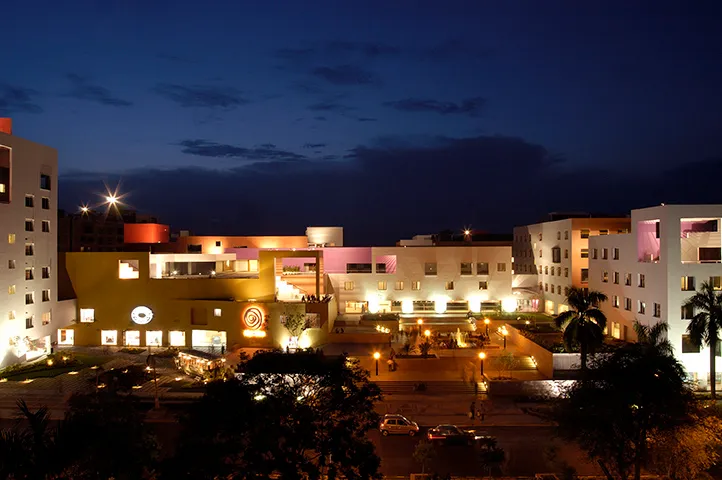
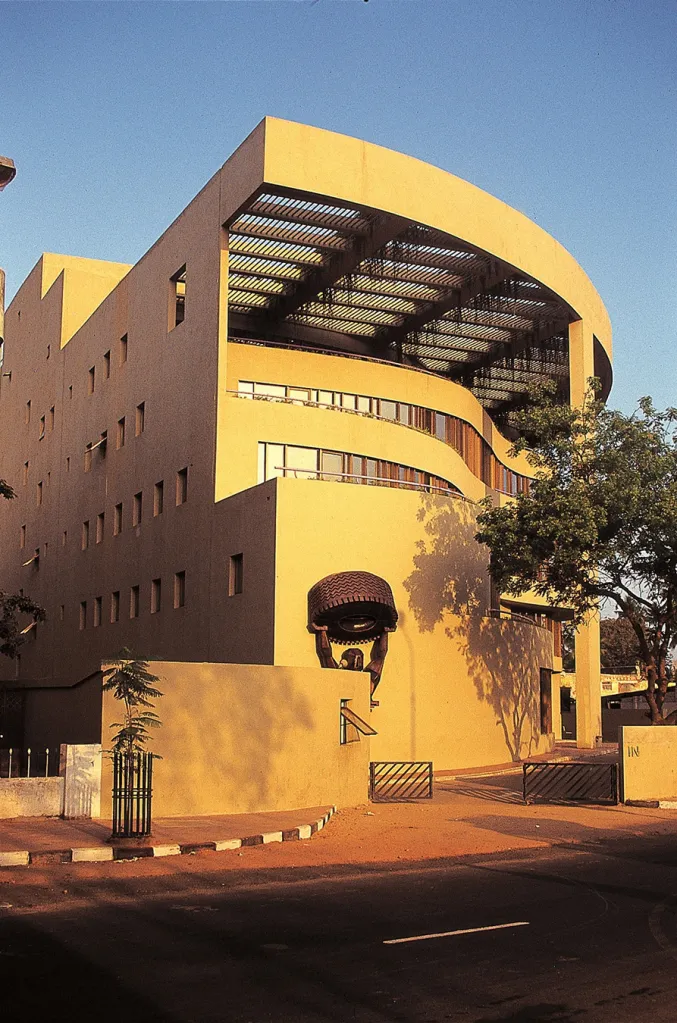
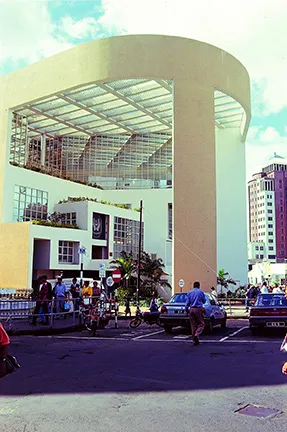
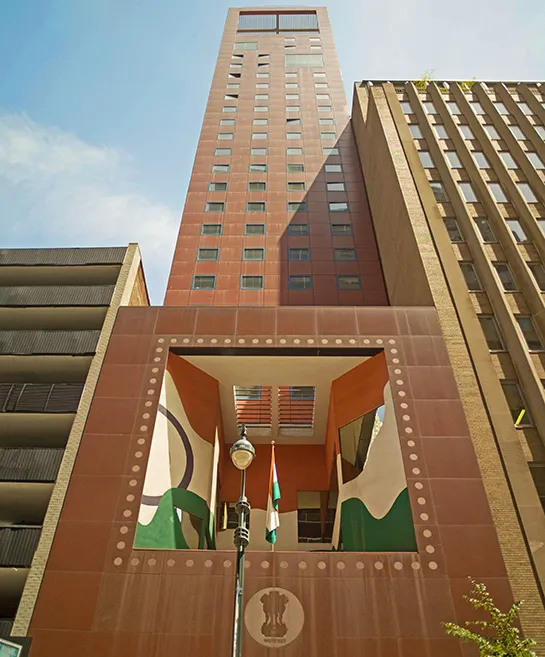
2. Unfolding pathway
The striking graphics were intended to be arboreal, not aquatic. Most visitors to British Council ascend the tree of knowledge to the library above and in doing so they short-circuit the formal axis that connects the three-axis Mundi (“each recalling one of the principal belief systems that exist in the Indian sub-continent”[xviii]) for the processional path does not trace the building’s natural circulation. A pathway “gains enormously in vitality as it moves along a shifting axis so that it is seemingly ever-changing, ever-surprising, and yet lucid and structured”[xix] as was experienced by visitors to the Handloom Pavilion, and the later Hindustan Lever Pavilion (the first instance of supergraphics used on his buildings), while reaching the nave of the Salvacao Church (with the samadhi skylight, before the effect was diluted with painted glass), while descending the hill at the Bharat Bhavan in Bhopal, or ascending the metaphorical street in Delhi’s fetishized Crafts Museum. In Cidade de Goa large-scale murals and pathways complement each other as aspects of a cinematic sequence (the trompe l’oeil however is more convincing in photographs which ‘flattens’ architecture itself into an image).
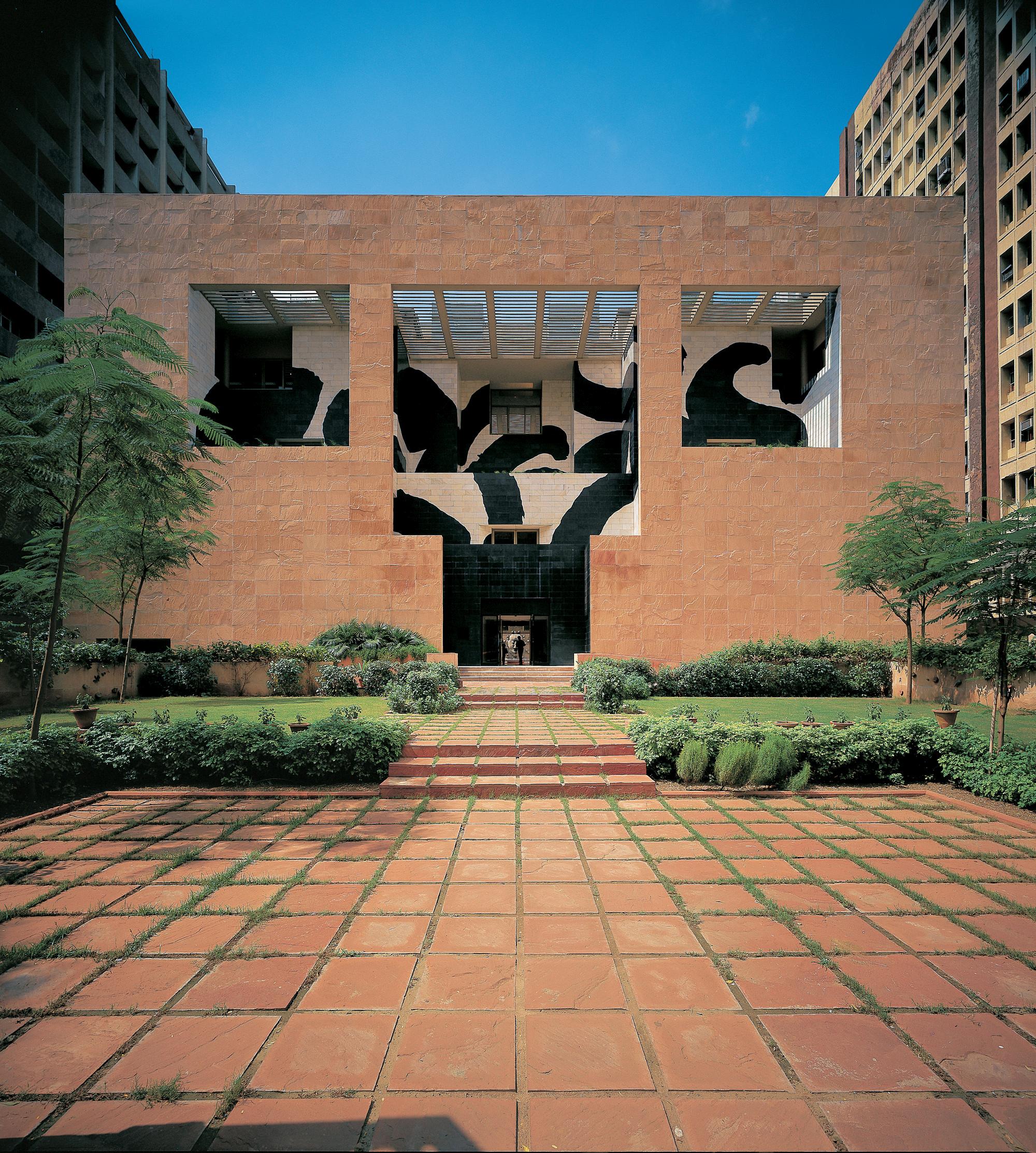
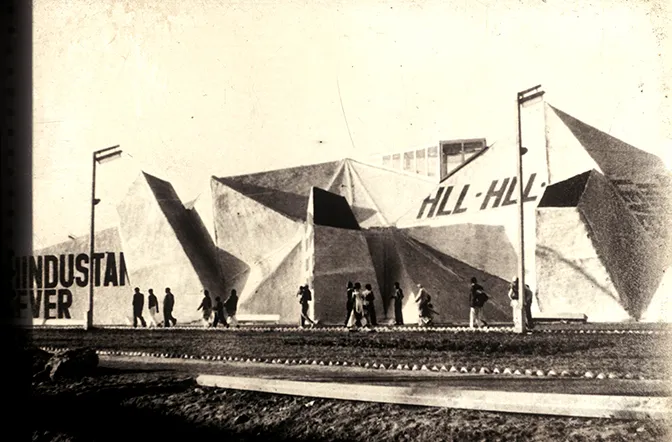
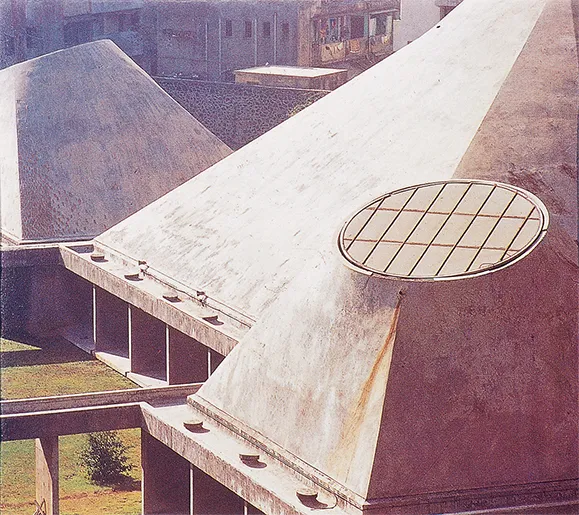
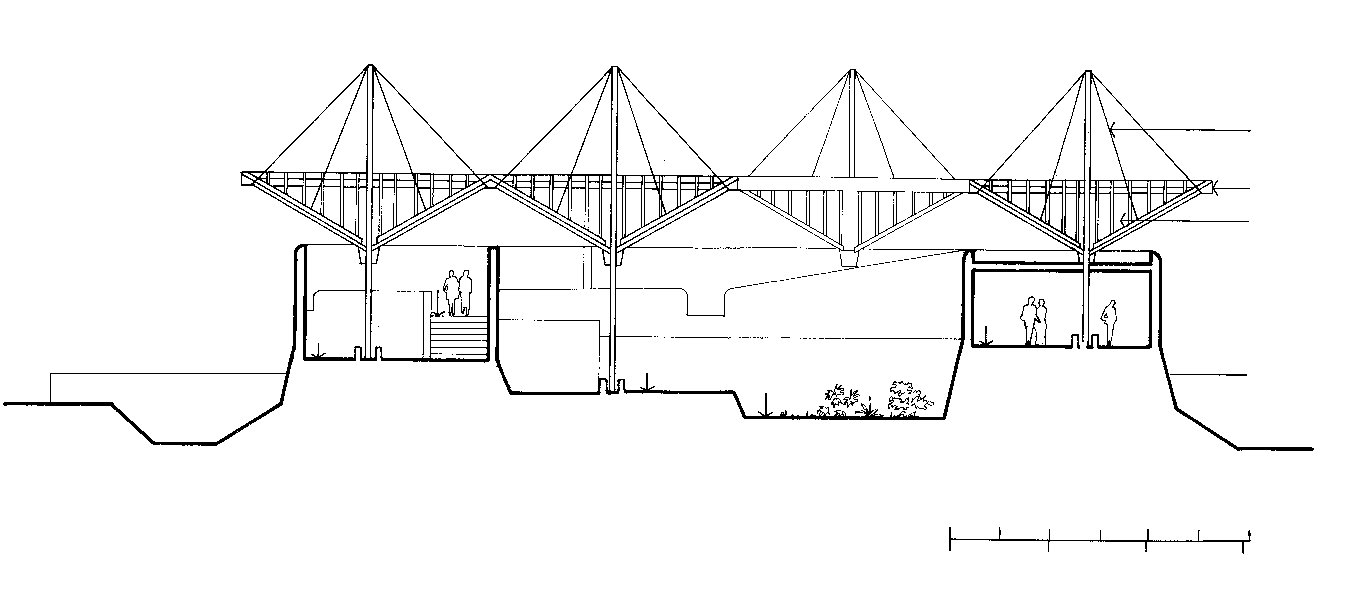

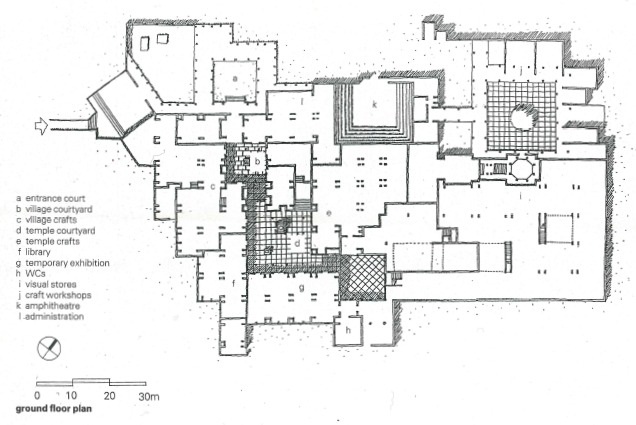
- The ordering square
“Certainly, looking back at my own work, I find a reappearance again and again of the square plan…”[xx] And hence the persistence of the square courtyards and sculptural kunds (stepped wells). But it goes beyond the plan: a stylistic tool that pervades the elevations as well; with a predominance of square windows, square apertures, square entrance doors, square arcade rhythms and the spate of square ‘urban windows’ in Delhi, NY and Mexico.
Squares very quickly disclose their nine-square variation which results from their first odd-number subdivision. The resulting square-in-the-centre is a useful core for services, circulation, courtyards etc. It is this presence of the centre and its multifunctionality that explains why the “mandala is a timeless and universal form, in fact, found in many other cultures around the globe and across history”[xxi]. Little wonder that variations on its theme have regularly appeared in Correa’s works since the very beginning of his practice: Twin Houses, Patwardan House, Kanchanjunga Apartments., Belapur Housing (deleting the corner square for access and the central square for the court, leaves the housing to grow in multiples of seven, gracefully achieving a density of 500 people per hectare), Vidhan Bhavan (inscribed by a great encircling wall). With Jawahar Kala Kendra, however, the implicit is made explicit. Simultaneously, the pragmatic strategy now begins to somehow take on magico-mythical properties. The nine-square diagram, Correa begins to tentatively suggest, is “something physiological in the deep structure of the human brain”[xxii] when all along it belonged to the deep structure of the square itself.

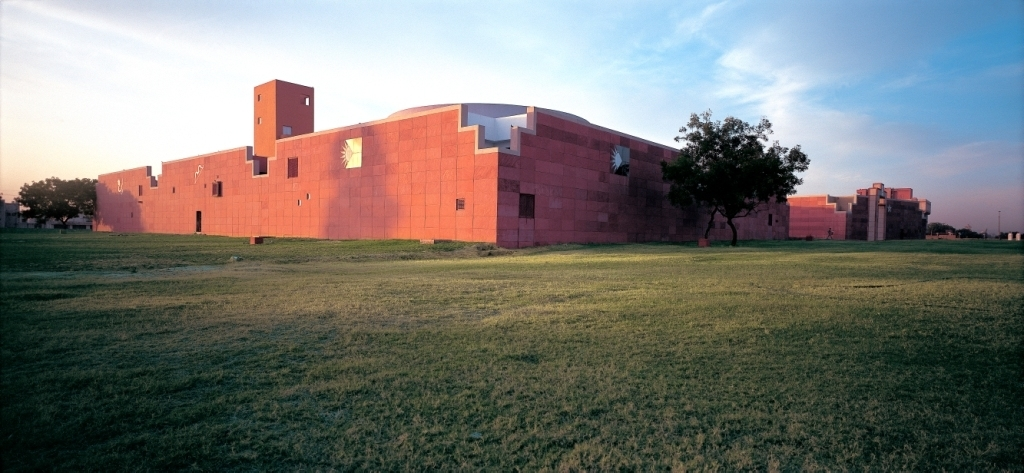
Kit-of-parts
The imperative climate had gradually led to a “kit-of-parts… the section which facilitates convection currents, the internal zone of micro-climate, the stepped terraces, the pergola roof.”[xxiii] To complete the kit, add the unfolding pathway with its supergraphics, the architect’s penchant for the square (hence nine squares and the kund), and an encircling wall to lend coherence. A recognizable style that evolved, almost inadvertently (just as Modernism’s ahistorical banishment of style itself became a historical style), is a reflection of consistency in approach. But there is always the risk of even inadvertent styles becoming stylized: the process becoming a product towards which the program moves. Kit-of-parts run the risk of becoming box-office formulas. Hence the importance of the architect’s writings in which he sets out what he wishes to accomplish with his kit.
Manifesto
The New Landscape – Urbanisation in the Third World (1985) was born out of envisioning the whole machine and not merely celebrating its spare parts. Correa dedicated the book to his wife, “For Monika who always encouraged me to go in this direction…with the sneaking suspicion that these thoughts and ideas, however inadequately expressed, are more relevant to our world than any buildings I could ever possibly build”. In the Indian context, that insight applies to a whole category of architectural practice to which Correa belongs and epitomizes. It is a lean organization that occurs midway between a large corporate office with its inherent commercial compulsions and necessarily conservative slant, to the hands-on architect at the other end of the pole whose architecture is confined to the parameters he designs himself into.
At the macro-level it is architecture as an industry (e.g.: Hafeez Contractor); at the micro-level, it is architecture as a craft (e.g. Laurie Baker). Midway, with architecture as a cottage industry, is a flexible practice that makes forays into either category. It is capable of tackling large projects while retaining a remarkable intimacy during the whole process. It is hence the most significant category of professional practice and transforms the architect into an activist with “architecture as an agent of change.”[xxiv] It is from this category that we have most of the practising architects who also teach and write (the activist’s compulsion to propagate). “Correa is a very good example for our students,” says Dean Kelbaugh of the University of Michigan where Correa teaches an annual semester (in Massachusetts, but not in Mumbai). Referring to the range of the Indian architect’s oeuvre, he adds, “There is no one comparable in the United States.”[xxv] Certainly not in the field of urban housing, the subject of his recent monograph[xxvi] is a fitting companion to the earlier manifesto. In the next 30 years, more people will live in urban areas than in rural, slum dwellers will number 2 billion and over half of them will be in Asia. Little wonder that in 2006 India joined UN-HABITAT to establish a new Asia-Pacific housing forum.
As a manifesto, the last chapter of New Landscape is devoted to “Scanning the Options”. He begins by rejecting an ancient one: “In India since Vedic times, sacred diagrams called mandalas have formed the basis of architecture and city planning….it would be foolish to think of invoking them unless we also subscribed to the underlying construct of the cosmos they are meant to represent.” And then a rethink in the very next sentence: “Yet in a century when science has postulated an ever-expanding universe, it may be well worth our while to consider the modelling of our central beliefs as the basis of structuring our environment.”[xxvii]
Though the imaginative notion, of equating black holes with Brahman, lacked rigour, it moved centre-stage when the next year he curated Vistara the Festival of India in USSR exhibit (a year earlier Raj Rewal & Ram Sharma had curated the Festival of India in France). The mandala was not only on the cover of the catalogue, it was also the device to seek out the essence of what constituted architecture in India. A decade earlier Edward Said had warned of the serious limitation of an approach that insists that ”an essence should exist – sometimes even clearly described in metaphysical terms – which constitutes the inalienable and common basis of all the beings considered; this essence is both “historical” since it goes back to the dawn of history, and fundamentally a-historical, since it transfixes the being…instead of defining it …as a product, a resultant of the vection of the forces operating in the field of historical evolution.”[xxviii] The exotic kunds at the centre of the mandala had curious large-scaled offshoots, e.g. Jawahar Kala Kendra JKK (1986) and Inter University Centre for Astronomy & Astrophysics IUCAA( 1988).
The Mandala & the Kund:
The ‘misplaced’ entrance square, one of the nine that make up the JKK mandala, alludes to the imaginative misreading of the plan of Jaipur city itself. It recycles the notion of a hill’s presence banishing the NW square to the diagonally opposite SE corner of the city, to retain its numerical correctness. But mandalas are as much qualitative diagrams as they are quantitative. They derive their properties from their orientations: a corner displaced diagonally loses all its properties and hence is an impermissible manoeuvre (some scenery are immutable: they cannot be rearranged). Mandalas come with their own baggage which you accept or ignore at your peril.
The one element that would have invoked the cosmos is conspicuously absent from its arena: the central square, all 30 metres X 30 metres is devoted solely to it with all the props in place. But the kund is without water. Without a reflecting pool, what hope of capturing the sky? The subterranean has become terrestrial and the retaining wall as stepping stones of the original stepped-wells reduced to steps that retain nothing but their own shallow plinth. The archaic remains skin-deep, more photogenic than photosynthetic as all the marble, granite and mica inlays and cosmic supergraphics on the façade are too literal to transcend the images they portray while the associations of the stars with the program remain arbitrary. Sacred images as popular culture in secular contexts end up satisfying neither.
If in the 70s Louis Kahn’s IIM in Ahmedabad failed “on the level of poetic invention” according to Correa, with its “great exaggeration of brick, and you never want to see another brick again; they keep pouring out of your ears”[xxix] then in the 90s it was red sandstone that kept pouring out, as JKK failed on the level of poetic invention. But it succeeded as an agent provocateur, Correa’s website lists its appearance in 7 books and 20 journals, attracting more commentary than any of his other 144 projects.
Ironically it was Nehru who said: “… what I like above all this, is the creative approach – not being tied down to what has been done by our forefathers and the like, but thinking out in new terms; trying to think in terms of light and air, and ground and water and human beings, not in terms of rules and regulations laid down by our ancestors”[xxx] But alas it was too late. Architects were waking up to an ancient box-office formula of success. Mandalas of various pedigrees were what a nation needed now that it was opening out its sky to alien satellite channels and its economy to global capital with all its uncertainties. Little wonder that in 1995 four out of five awards of the Journal of the Indian Institute of Architects[xxxi] went to projects that implicitly or explicitly were based on the mandala (the one that got away was the aptly named Jawaharlal Nehru Stadium by C. N. Raghavendran). Developers had got into the act much earlier, selling “Vaastu flats” at a higher premium, even as Correa cautioned (fifteen years after JKK), “You could only frighten a politician or a businessman, making him fear the loss of his money or position, but “Vaastu” is much deeper than mere changing positions of seating et al.” [xxxii]
In Correa’s other project, the Inter University Centre for Astronomy & Astrophysics (IUCAA) in Pune, the anaemic kund with obese statues is challenged with a more ambitious agenda. It is to convey the centrifugal energy of the Expanding Universe, “a Black Hole…with energy being ejected on the diagonal.”[xxxiii] Elsewhere in the Complex the courts are paved to represent, with the aid of landscaping, the fractal pattern of Serpenski’s Gasket and the infinity figure of Lagrange’s Lobes. Paradigms end up rearranging the grass.


The Cosmic Fragment
If both IUCAA and JKK barely succeed as architectural experiences it is not because, but in spite of, their cosmic yearnings. Yet, what the grand rationalizations could not do, a stylish manoeuvre astonishingly did. To relieve the dullness of the local basalt stone in constructing the two swerving walls between which you arrive at IUCAA, Correa had it capped with black kuddapah stone and culminating courses of black polished granite. The resulting ‘Black on Black’ aesthetic, with the smoothening out of the texture from coarse-basalt, matt-kuddapah, to mirror-granite, is a precursor of the night-sky unravelling the true colour of the universe. The meandering walls of IUCAA, with their brooding intensity during the monsoon, with their gradations of accelerating darkness, express the metaphysics of an architectural brief as scarcely any other wall in modern India. In the 1997 International Architectural Competition for a Museum of Islamic Arts in Qatar, it was again the undulating wall of the main facade that gave Correa’s winning design its identity. The influence of the Aga Khan Award of Architecture program on Correa’s oeuvre awaits analysis as he has been involved with the program since its inception three decades ago (“… perhaps when Nature wanted the exquisite architecture of the Alhambra, she first produced the Muslim”). [xxxiv]

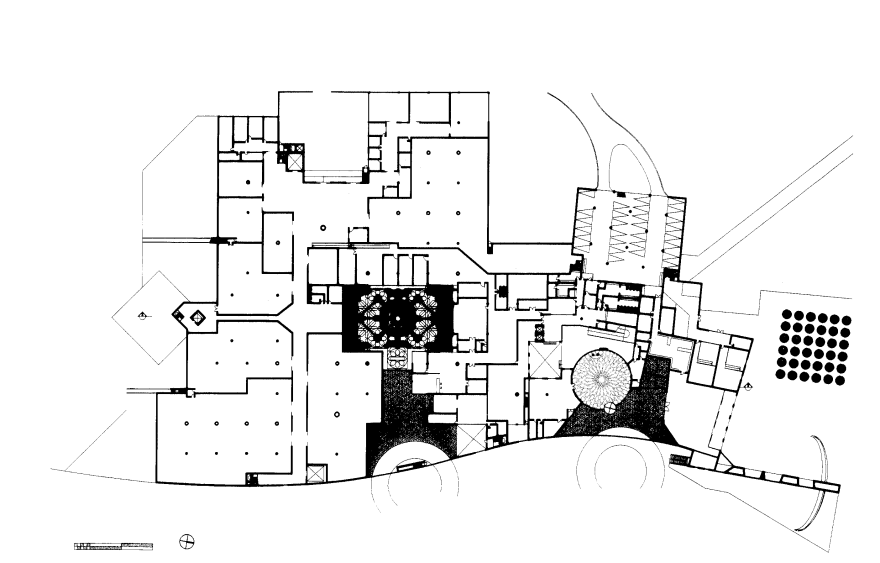
As an architect, Correa is adept at changing the levels of his perception, at zooming in and out; from macro-level mystification to micro-level pragmatism: “At the other extreme, we must learn to be equally inventive about how we generate our habitat at the micro-scale.”[xxxv] If on the one hand the architect got mired in essentialist interpretations of the past, it is his pragmatic handling of detail in the present that shows the way out. God, it appears, continues to reside in details. In times of increasing complexity when the one big idea or a single diagram is found wanting, only fragments can encapsulate and illuminate the whole.
What applies to buildings applies to nation-building too: no single “Indian Style” can ever hope to encapsulate India. If at the beginning the construction of a Chandigarh was the projected image of what India ought to be, then towards the end of 50 years once again architecture moved centre stage with another vision that led to the destruction of Babri Masjid. The founding historian Rajendralal Mitra, had regarded Indian architecture as a great stone book that had been misread by Fergusson, his British predecessor. A century later, the stakes had shifted from misreading the book to burning the book for reducing Babri Masjid to rubble was akin to setting fire to the constitution of India on which the Indian republic stood. The site shifted from the architectural to the judicial, to the Supreme Court even as the pro-mandir thesis shifted “from invocations of hard facts to a recourse to common sense to an ultimate stand on belief.” [xxxvi] (As a strong counter possibility the extant masjid was not Babri but Sharqui and the site were earlier inhabited not by a Hindu temple but by a Buddhist one.)[xxxvii] The fall of Babri Masjid (1992) was an uncanny prelude to the fall of the European Mostar Bridge (1993), the American WTC (2001) and the Iraqi Askariya shrine (2006). The dramatic obliteration of the “great stone book” of architecture was serving deadly agendas.
Failed Chandigarh and destroyed Babri Masjid are both astonishingly symmetrical manoeuvres; one was an attempt built anew on tabula rasa the other an attempt to erase the existing to create a tabula rasa; one imagined a future the other imagined a past; both live on as metaphors and increase in power as they proliferate in discourse; both are the outcome of grand rationalizations of what India ought to be. “Indeed,” as Amartya Sen observed, “it can be argued that there is much in common between….imperialist history of India and the Hindu nationalist picturing of India’s past, even though the former image is that of a grotesquely primitive culture whereas the latter representation is dazzling glorious.” [xxxviii]
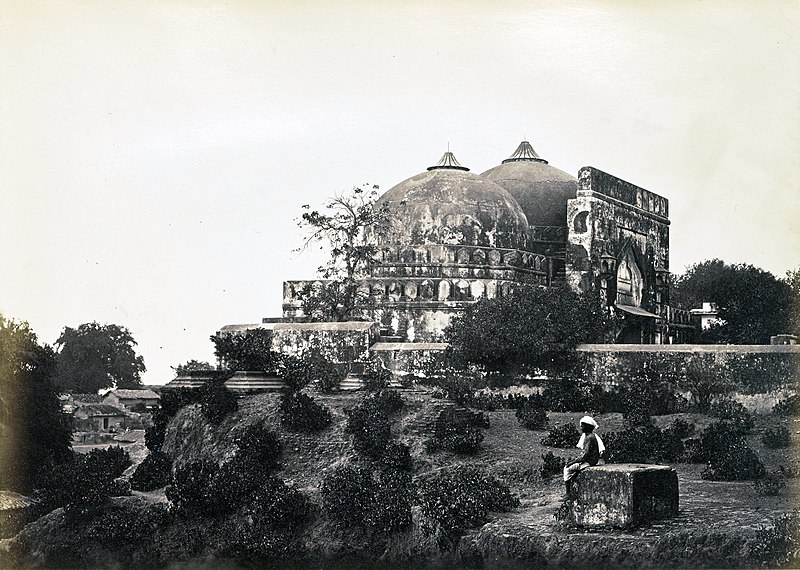
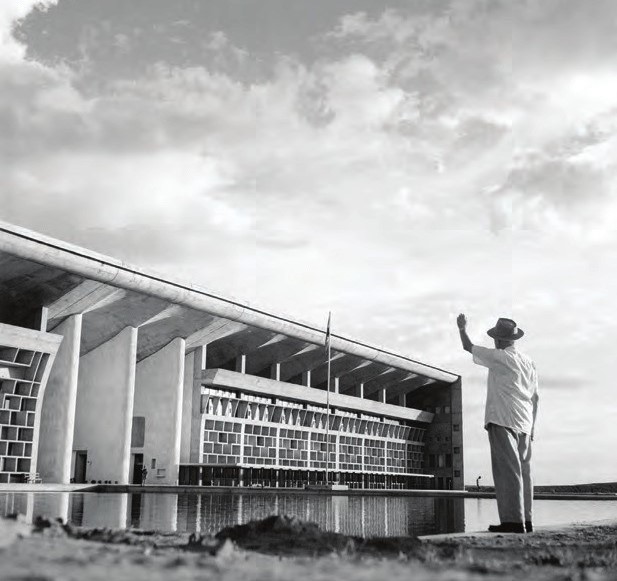
The orientalist fantasy of Imperial Delhi, the majoritarian religious nationalism’s evocation of a fantasized past, and the Nehruvian secular nationalism’s fantasizing of the future are all sweeping enterprises that strove to fit, with different degrees of violence, a culture of irreducible diversity into a metanarrative straightjacket. Little wonder that the surface did not hold. In the midst of the 1993 communal violence that gripped Bombay – it became Mumbai later – Correa was reminding the authorities and citizens that “cities are far more fragile than we think…they flourish only in places protected by law and order, places where merchants of differing colour, caste and creed can live together. When these conditions disappear, so does the city.”[xxxix] (Years later he despaired at “Our abysmal indifference to what happens to the Other…Why don’t we speak up?”)[xl]
Generating the Context
The New Landscape is an example of Correa’s ability to transform raw data into images; numbers into metaphors. His thinking, communication skills and buildings bear the hallmarks of his style: the ability to catch the big idea with a metaphor or a diagram and ensure that it remains undiluted even as it is actualized. The book passionately argues that equity is possible in the Indian urban context as it always was: equi-plots developed to the extent of the owners’ needs and resources (besides, also achieving a “low-energy high-visual” result). In search of a solution to the nation’s endemic housing shortage, he shifts gears from a category to a category of categories and arrives at a higher hierarchical level with an insight: “the wonderful thing about the Third World: there is no shortage of housing. What there is a shortage of, most definitely, is the urban context in which these marvellously inventive solutions are viable. This then is our prime responsibility: to help generate that urban context.”[xli] Later, appointed by Rajiv Gandhi as Chairman of The National Commission of Urbanization 1988 Correa’s team put forward various strategies (ranging from deflecting migration away from major cities to relating urban form to employment opportunities) to help generate that context. The two volumes of the Report of the NCU, as is the norm, went on to gather bureaucratic dust.
But before the dust could settle the report revived a fledgling conservation movement in Mumbai. One of its key recommendations titled “Urban Conservation through Town Planning”[xlii] argued for conservation to become intrinsic with development and be removed from the hands of government archaeologists. Even though the subject formed less than 9% of the report, Cyrus Guzder heritage activist and also a member of NCU, has shown how it emboldened civic groups in Mumbai to revive their dialogue with the government. Two years later a Working Committee on Urban Conservation was constituted. To focus the citizens, professionals and authorities on the issues involved, Rahul Mehrotra of Bombay Conservation Group, along with others, organized a series of annual seminars from 1993 to 1997. Finally in 1995 Maharashtra became the first State to endorse and formally enact the Heritage Conservation Regulations for Bombay (and extend it to other parts of the State).
When Rajiv Gandhi said, “Calcutta was a dying city”, Bengali intellectuals thought the obituary to be rather premature and were outraged. In response the Prime Minister appointed NCU.[xliii] In retrospect, Calcutta’s death throes were Mumbai’s salvation. Delhi has an older and more comprehensive movement, with the School of Planning and Architecture had a Department of Conservation offering a post-graduate degree on the subject, and with the presence of INTACH (Indian National Trust for Art and Cultural Heritage). Yet Delhi’s conservation movement remains without legislation.
India’s largest city has the lowest people-to-open space ratio in the world. Compared to dense New York’s five-and-a-half acres per 1000 people, Mumbai squeezes over 180,000 in that acreage (respectively, and allegedly, the most and least courteous among major cities).[xliv] Hence when dysfunctional textile mills were to return to the government, 600 acres of the leased land, citizens were hopeful for some breathing space as a 1991 regulation held that one-third area would be devoted to public use, one-third to public housing and only one-third for commercial development. Charles Correa chaired a study group in 1996 that suggested an integrated approach whence the total acreage could be developed on an urban scale rather than piecemeal by individual mill owners. While the high court ruling in 2005 upheld the 1991 regulation, the Supreme Court in a 2006 judgment, smacking of urban myopia, overruled it. Myopia could also be environmental as the spate of constructions in Mumbai’s low-lying wetlands chocked the Mithi river which aggravated the flooding in the downpour of July 2005.
“The last few years have made us wiser. Cities do not change because of ideas – but because of political will”[xlv] observed Correa when Marg reprinted the 1965 proposal by him, Pravina Mehta and Shirish Patel that had led to the creation of New Bombay (no other Art journal can boast of an article leading to the creation of a city). The way forward, for all Indian cities, was self-governance. But our municipal statutes were framed by the British to ensure that while the ‘natives’ debated, the Imperial Administration held all the powers. The Municipal Commissioner was answerable to them and not to the municipal corporation. Colonialism insured that the city did not belong to its citizens. Sixty years later the State Governments perpetuate colonial policies. Only recently, and inadvertently, have state politicians begun to relinquish power to the urban elite with private self-contained townships springing up near Delhi and near Mumbai for NRIs (Non-Resident Indians). More significantly decentralization entered the polity in 1992 with constitutional amendments to empower PRI (Panchayat Raj Institution). Though patronage politics transferred the power only to a rural elite, it is the PRI which affects 72 per cent of Indians in 550,000 villages that have a greater potential than the high-profile NRI, to devolve power.
Correa’s strategic shift from one logical type to a higher; from a class to a class of classes is also the shift that will have to be made on a national scale: from the production of architecture to the context of its production. This then is our prime responsibility: to help generate that context. The first steps are long overdue: the dismantling of colonial practices that inhibit the context from coming into being. Apart from the misplaced sites of national and state governance, even architectural education retains crucial aspects of the colonial agenda[xlvi] (admitting students only from the Science faculty and not Arts; ancillary subjects in the syllabi having a technical bias; the All India Council of Technical Education and the Council of Architecture fighting turf wars in 2003 to quixotically control architectural education; the Architects Act 1972 regarding architecture as a vocation rather than a discipline); the texts of architectural history remain in the shadow of orientalism[xlvii]; the mismatched relationships of professional architectural organizations (Indian Institute of Architects in the States and the Council of Architecture at the Centre) that have voluntarily inherited the problems from the ‘mother-country.’[xlviii] Gramsci’s inventory remains to be drawn and the infinity of traces awaits recognition.
With an inventory that is more political than aesthetic, we recall Gandhi’s quip: the great goal of the Indian nationalist movement was to rescue the English from their modernity. We may well have to rescue ourselves from our own notions of modernity even as our great middle class, along with the great Indian Diaspora, be the fervent harbinger of globalization. As Charles Correa said “we have to come down a different road altogether, one which commences from quite another starting point. This is the challenge that the architects of the non-western world must face.”[xlix] There are other pathways that proceed from the courtyard open to the sky. It is in the unfolding of those emergent pathways that a nation finds that its architecture is more a fluid dialogue than a fixed prophecy.
[i] Said, Edward Orientalism New York: Vintage Books 1979 p.25
[ii] Khan, Hasan-Uddin Ed. Charles Correa: Architect in India London: Mimar Book 1989 (first ed. 1984)
[iii] Correa, Charles Charles Correa, Bombay: Perennial P. 1996 p.35
[iv] Frampton, Kenneth The Work of Charles Correa in Charles Correa, Bombay: Perennial P. 1996 p.13
[v] Charles Correa, ‘A Place in the Sun’ Journal of Royal Society of Arts, May 1983
[vi] Frampton, Kenneth 1996 p.13
[vii] Bhalla, J. R. CA news Volume 7 No.1 January-June 1997
[viii] Council of Architecture June 21, 2006: http://tinyurl.com/rft73
[ix] Frampton, Kenneth ‘The Predicament of the Place-Form’ The South Asian Paradigm ed. Farooq AmeenMumbai: Marg Publications 1997 p.101
[x] Nehru’s address: Lalit Kala Academy’s Seminar on Architecture, Delhi. March 17-21, 1959.
[xi] Lefebvre, Henry Writings on Cities TrEd. E.Kofman, E.Lebas, Massachusetts: Blackwell P. 1996 p.207
[xii] Malik, Bipin Kumar “Planning Of Cities And Realities-A Case Study Of Chandigarh” City Futures International Conference , Univ. of Illinois, Chicago 2004, p.31 June 21, 2006: http://tinyurl.com/hl2sq
[xiii] Khilnani, Sunil The Idea of India, London: Hamish Hamilton 1997 p.107-149
[xiv] Kanvinde, A. P. Seminar on Architecture New Delhi: Lalit Kala Akademi 1959 p.12
[xv] Khilnani, Sunil 1997 p.107-149
[xvi] Frampton, Kenneth 1997 p.108
[xvii] Correa, Charles The New Landscape, Bombay: Book Society of India 1985 p.45
[xviii] Correa, Charles Charles Correa, Bombay: Perennial P. 1996 p.188
[xix] Correa, Charles ‘Theme and Variations’ Architecture+Design VIII:5 1991 p.45
[xx] Correa, Charles Transfers and Transformations, Singapore: Mimar Book 1989 p.174
[xxi] Ibid., p.175
[xxii] Ibid.
[xxiii] Correa, Charles 1996 The Blessings of the Sky, Bombay: The Perennial Press p.24
[xxiv] Correa, Charles 1989 p.175
[xxv] Katterman, Lee “Charles M. Correa: An Architect of Range and Sensitivity” June 21, 2006: http://tinyurl.com/qqrsj
[xxvi] Correa, Charles. Charles Correa: Housing and Urbanisation, London: Themes & Hudson 2000
[xxvii] Correa, Charles 1989 p.124
[xxviii] Said, Edward 1979 p.97
[xxix] Correa, Charles “Chandigarh: the view from Benares”, June 22, 2006: http://tinyurl.com/mll3r
[xxx] Nehru’s address 1959
[xxxi] Nagrath, Anil Ed. Journal of the Indian Institute of Architects 60:05 July-August 1995 p.2,5,10,16,29,36
[xxxii] Gonsalves, Godfrey “Roots Of Architecture” Goanet June 21, 2006: http://tinyurl.com/fx5xa
[xxxiii] Jencks, Charles The Architecture of the Jumping Universe London: Academy Editions 1996 p. 136
[xxxiv] Correa, Charles “Vistas” Architecture for the Islamic Societies Today Ed. James Steele London: Academy Editions 1994 p.17
[xxxv] Correa, Charles 1985 p.126
[xxxvi] Guha-Thakurta, Tapati Monuments, Objects, Histories: Institutions of Art in Colonial and Postcolonial India NY: Columbia UP. 2004 p.275
[xxxvii] Srivastava, Sushil. The Disputed Mosque: A Historical Inquiry New Delhi: Vistaar 1991 Chapt. 5 & 7 (Qtd. Guha-Thakurta 2004 p.366)
[xxxviii] Sen, Amartya “Indian Traditions and the Western Imagination” Daedalus Spring 1997 + 2005 p.165
[xxxix] Correa, Charles “Bombay: the golden goose” Sunday Times of India January 17, 1993 p.11
[xl] Correa, Charles “A Question Of Issues” The Idea Of Seminar #481 (September 1999) June 21, 2006: http://tinyurl.com/q73ax
[xli] Correa, Charles 1985 p.131
[xlii] Correa, Charles 1988 Report of the National Commission on Urbanisation Vol.II, New Delhi: Gov. of India Publication p.235
[xliii] Guzder, Cyrus “Bombay Shows the Way: Pioneering Urban Conservation” Marg 49:1 1997 p.56
[xliv] “World of Courtesy: Ranking of 35 Cities”, Readers Digest July 2006 http://tinyurl.com/q45gu
[xlv] Correa, Charles “New Bombay: Marg as an Urban Catalyst” Marg 49:1 1997 p.70
[xlvi] A.G.K.Menon’s “The Contemporary Architecture of Delhi: A Critical History” disContinous Threads Mumbai Dec. 10-12 1997 p.2
[xlvii] Brand, Michael + Lowry, Glen guest eds. “Akbar and Fatehpur-Sikri”Bombay: Marg 38:.2 (n.d.) p.28
[xlviii] Chauhan, Akhtar 1998 Towards a New Era of Architecture Mumbai: Unpublished Manuscript p.49
[xlix] Correa, Charles “Chandigarh is 50 and young!” June 21, 2006: http://tinyurl.com/rgura
Taj, H. Masud, “Charles Correa & An Infinity of Traces” 6540 words Icon A. Dharker Ed. New Delhi: Roli Books 2008 p.65-82
Image Source
Featured Image- RIBA
The New Landscape- Kien Viet Publishing, issuu
Charles Correa and his wife Monika at home in Sonmarg featured by NationalGeographic in 1981, accessed via The Inside Track
IUCAA- iucaa.in and Charles Correa Foundation
[1] via Maanvi, the quint, Losing A Heritage: A History of Pragati Maidan’s ‘Hall of Nations’
[2] Leoni, Francesca & Moser, Sarah & Çelik, Zeynep & Behiery, Valerie. (2015). Exhibition Reviews. International Journal of Islamic Architecture

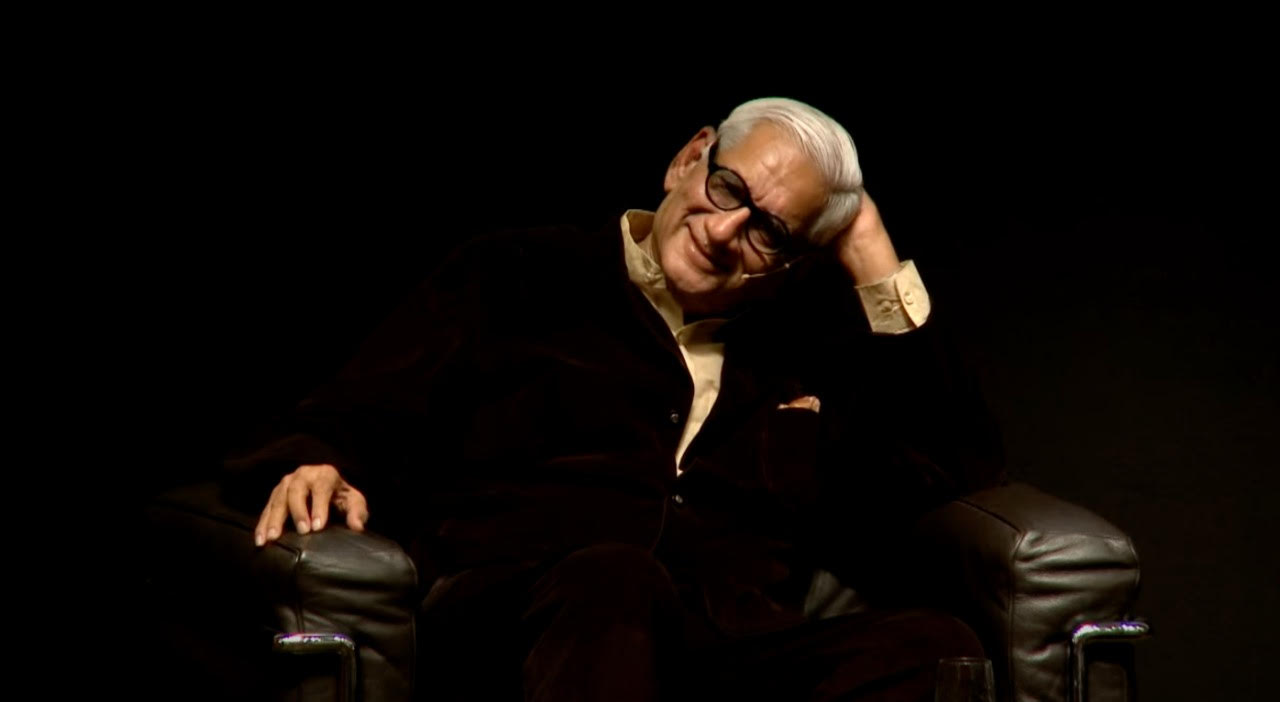









One Response